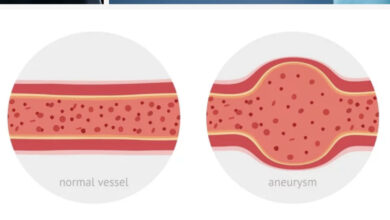ATRIAL FIBRILLATION: Benefit of Early Rhythm Control

In the past, the emphasis for treatment of Atrial Fibrillation focused on control of the heart rate. A rapid heart rate seemed to be the cause of more bothersome symptoms as well as the complications of Afib. Slowing the heart rate and taking blood thinners reduced symptoms and lowered stroke risk. In recent years, ablation procedures have changed the focus to elimination of the arrhythmia altogether. Ablations are difficult to do, expensive, and time-consuming so they were usually done only after the patient failed to be controlled by multiple anti-arrhythmic drugs. Many years of AFib would pass before an ablation was attempted.
Now there is scientific information that “initiating a rhythm control intervention within the first year of an AFib diagnosis could reduce risk of adverse cardiovascular events by 21% over a five-year follow-up period. Rhythm control therapy initiated soon after diagnosis of atrial fibrillation reduces cardiovascular complications without increasing time spent in the hospital….These results have the potential to completely change clinical practice toward rhythm control therapy early after the diagnosis of atrial fibrillation.”
“Rhythm control therapy” refers to anti-arrhythmic drugs and ablation. Anti-arrhythmic drugs have a high failure rate and are fraught with adverse effects. Ablations require hospitalization, general anesthesia, heart catheterization, mapping of conduction pathways inside the heart, and radio wave interruption of those pathways. An ablation can take two hours or all day and utilizes complicated, expensive computer equipment. But they are effective 75-85% of the time. That’s not a bad success rate. Repeat ablations are done occasionally bringing the success rate closer to 95%.
The message here is the problems resultant from long term atrial fibrillation are reduced by one-fifth if normal rhythm is restored within the first year after diagnosis. It’s just like coronary artery disease; patients with angina pectoris (chest pain) are treated with angioplasty, stent placement, or bypass surgery right away after the onset of symptoms. Doctors aren’t sitting by and waiting for angina to worsen, and are thus preventing heart attacks and sudden death. If early rhythm control for atrial fib is as successful as the aggressive treatment of coronary artery disease, a reduction in CV events of even greater than 21% is a real possibility. Time will tell.
Reference: https://www.practicalcardiology.com/view/early-rhythm-control.





I’m supposed to have an ablation sometime in the next month.
For Atrial Fibrillation? The majority of those are successful. Good luck with yours. Hope you’re feeling better.
For Atrial Fibrillation? The majority of those are successful. Good luck with yours. Hope you’re feeling better.